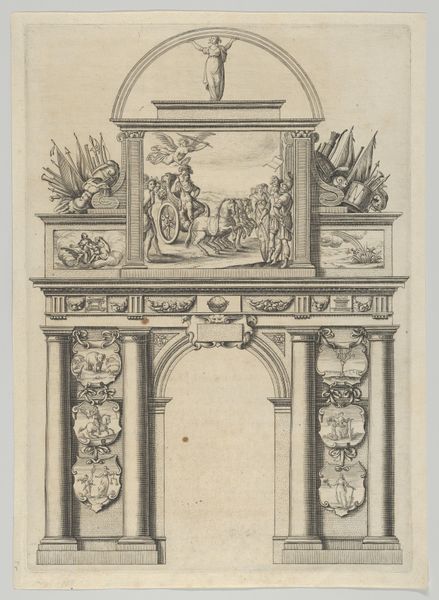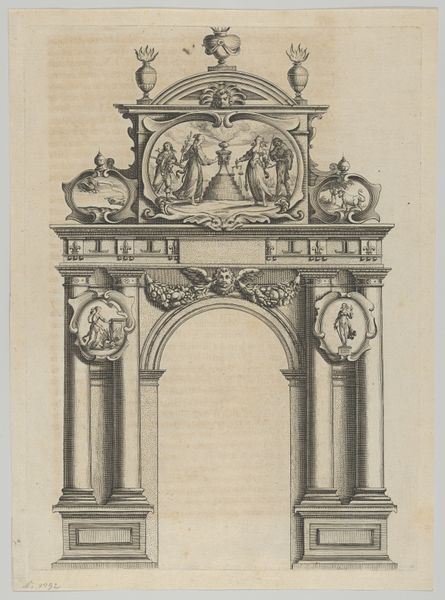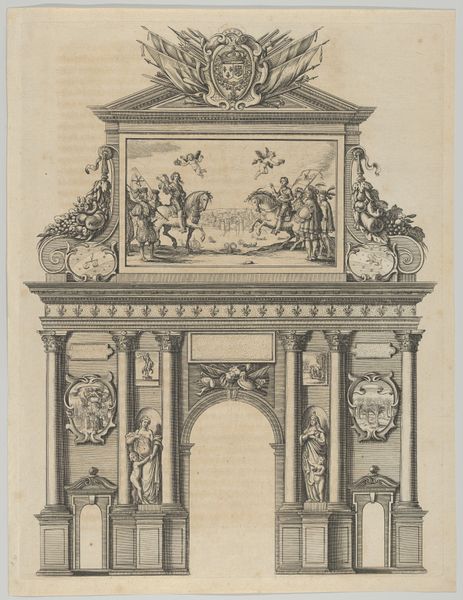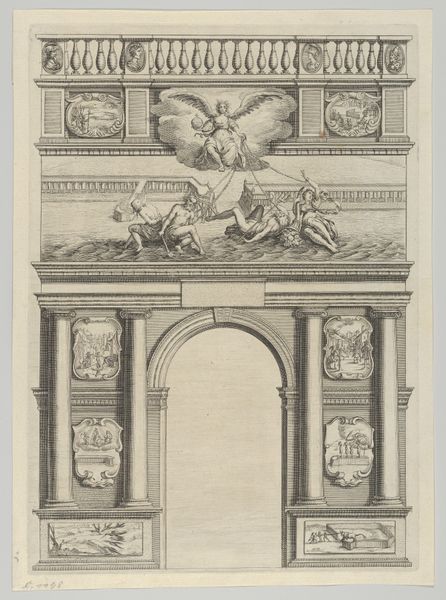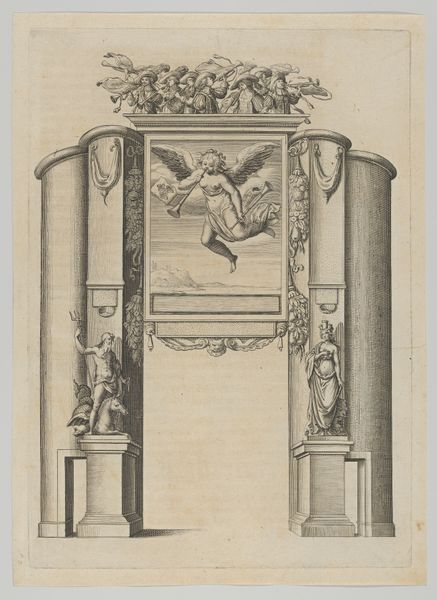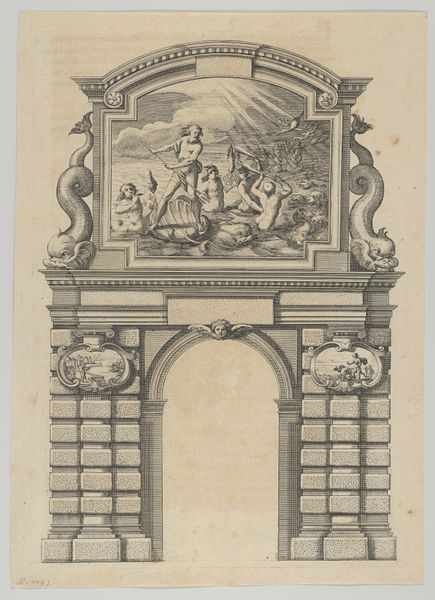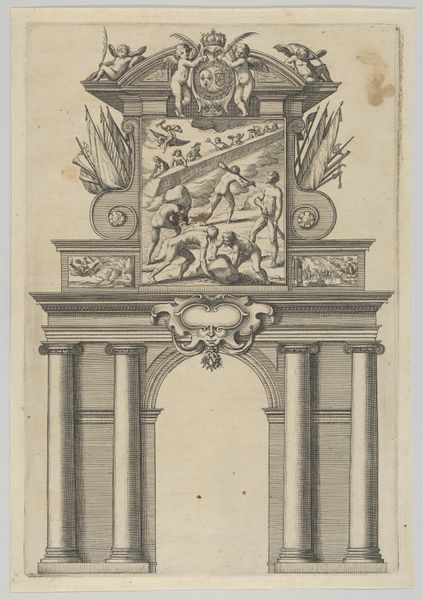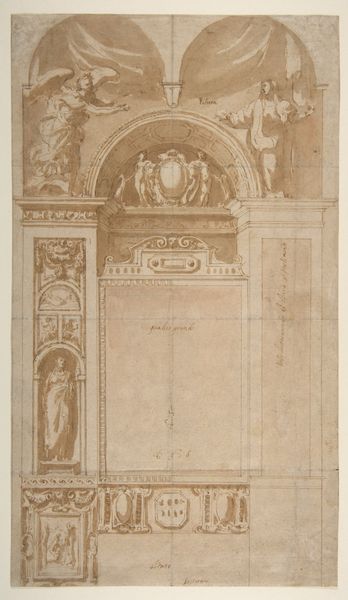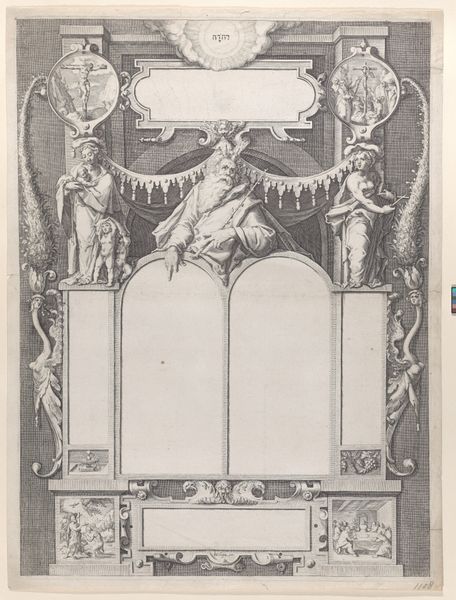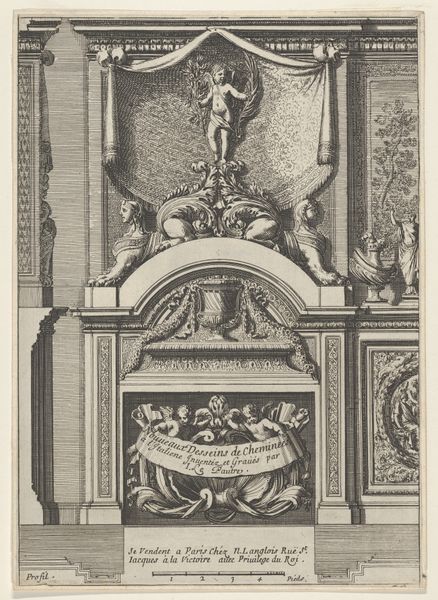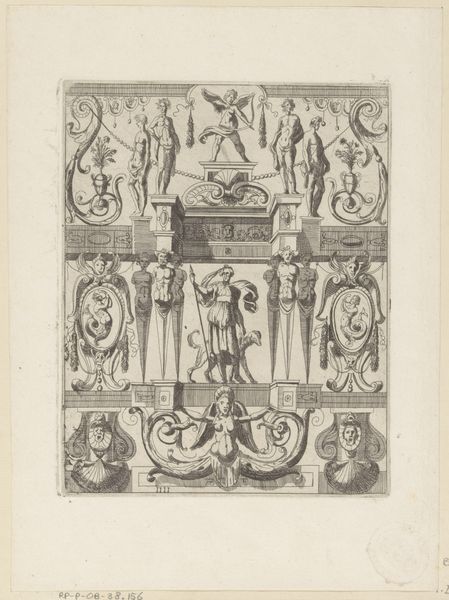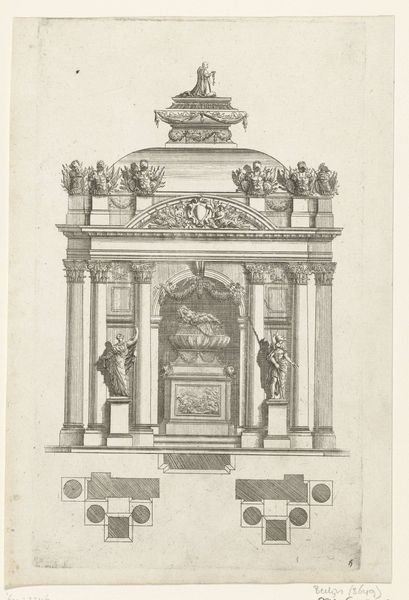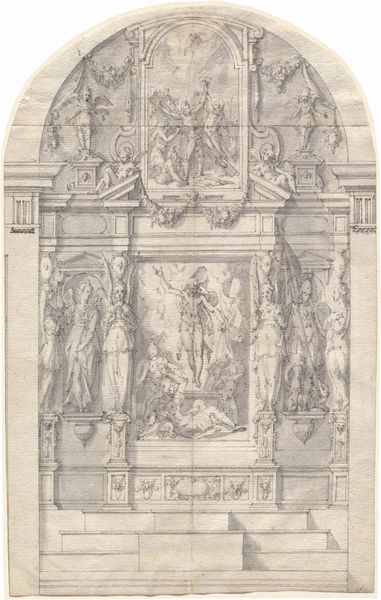
Triumphal arch, from 'Éloges et discours sur la triomphante réception du Roy en sa ville de Paris ...' by Jean-Baptiste de Machault 1629
0:00
0:00
drawing, print, etching, engraving, architecture
#
drawing
#
baroque
# print
#
etching
#
arch
#
history-painting
#
engraving
#
architecture
Dimensions: Sheet: 12 1/16 × 7 7/8 in. (30.7 × 20 cm) Plate: 11 1/8 × 7 3/16 in. (28.2 × 18.2 cm)
Copyright: Public Domain
Curator: What a fascinating image. We're looking at "Triumphal Arch," an etching and engraving created in 1629 by Melchior Tavernier. It's housed at the Metropolitan Museum of Art. What strikes you first about this image? Editor: Immediately, the crisp lines, the incredible detail for such a small image. There’s a formality here, a stark black-and-white that suggests precision and calculated grandeur, a hallmark of the Baroque. Curator: Precisely. Triumphal arches, even depicted on paper like this one, were loaded with symbolism. Note the crowns, laurel wreaths, and the royal coat of arms at the top. These are clear symbols of power and victory, celebrating the French monarchy. It's a potent statement about legitimacy and divine right. Editor: And those figures flanking the arch? Classical warriors above what seem to be subdued captives? The contrast is stark, underlining the message of dominance through classical motifs. Tavernier employs classic Baroque compositional strategies through the careful articulation of figures in specific spatial relations. Curator: Indeed. The figures evoke Roman precedents. The captives remind the viewer of conquest and submission. The entire structure functions as a stage set for royal power. Even the small scenes at the bases suggest battle and military strength. Editor: Yet, considering this is from a book commemorating a royal visit, the medium—an engraving rather than, say, a painting—tempers the bombast, or better, renders this grandeur more abstract. It suggests a diffusion of royal power via print, a controlled and disseminated image. Curator: Good point. It speaks to the power of reproducible imagery. Tavernier wasn't just creating a picture; he was manufacturing an ideal, replicating and amplifying the image of royal triumph across France and beyond. Each copy reinforced the same symbolic language of power. Editor: It’s almost chilling how effectively this architectonic representation communicates such a rigid, hierarchical worldview. Curator: Absolutely. These carefully rendered lines built not just an arch, but a lasting visual memory. Editor: Looking at this makes me wonder about the role of propaganda. It seems clear now how potent such stylized imagery was in constructing cultural meaning.
Comments
No comments
Be the first to comment and join the conversation on the ultimate creative platform.
